Being in The Hague is a bit like walking around inside a Dutch Painting. The mood is gentle, the scale is human, the light is beautiful and the details are small and exquisite. Nothing at all is open on a Monday, even shops are shut until after lunch. So, that meant an enforced day of wandering, doing nothing much except exploring on foot and trying not to get lost in the maze of old streets.

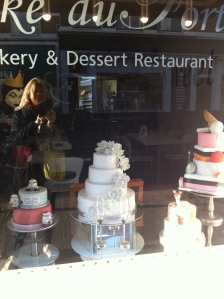
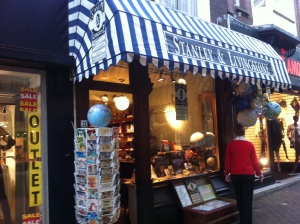
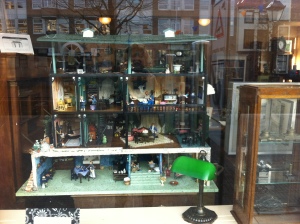
The Hague was the home of Alexine Tinne, the young Dutch adventuress who went up the White Nile. She missed it desperately when she was marooned in Khartoum, trying to sort her affairs out after the tragic deaths of her mother, her aunt and her two devoted servants. But she declared she could never return to the Hague, it would cause her too much pain to be in the town, let alone the house of her now deceased mother.
I went looking for Alexine’s house and found it easily on Lange Voorhout, number 32. Strangely enough I recognised the street and the avenue of trees it overlooks before I realised where I was. It was entirely familiar to me from her photographs of it she took in the 1850s, which I have been studying this year.

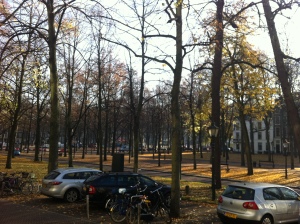
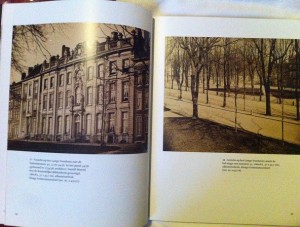
The National Archives in the Hague hold an extensive collection of letters written by her and her family and documents, and clippings relating to her time in the East. There are files and files of them, and their yellowed paper, faded ink and general fragility is at odds with the uber modern and efficient environment in which they are stored.
To see them requires a bit of bureaucracy: emails, on-line ordering requests, document sighting and the issuing of a visitor’s pass. No bags can be taken in and any objects have to be in a clear plastic bag. No pens, only pencils for note taking…I am the only person without a laptop, (I couldn’t face carrying it right across town to get it there). So there is a feeling of freedom when at the request desk you are handed your two cardboard boxes, and you can go to your big work table, open them as you please and take out file after file of delicate documents. No rules about how you handle them, nobody rushing you, they are yours for the day. And the bureaucracy is worth it…
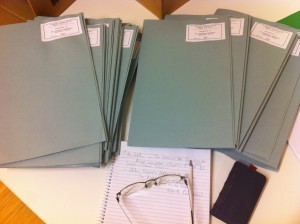
Luckily for me, upper class Europeans at the time spoke French to each other and Dutch only to the servants. And because Alexine’s half-brother was English, her and her family’s correspondence is in English and French. My schoolgirl French comes in handy yet again. Madame Smetana and Madame Stuckey would be proud of me!
Deciphering the handwriting is a bit harder, but Alexine’s handwriting is a language in itself. It has little lyrical control and repetition of a typically beautiful nineteenth century copperplate hand, so evident in the writing of her mother and various aunts, uncles and officials in the files. Instead it is strong, and at times messy, frequently written with a nib of uneven ink strength and peppered with ink-blots. I can relate to it! There are crossings out and words squashed in as asides. They seem to speak of her impulsiveness and her direct manner; it seems like she wants to get the words on the page in a hurry and does not care for convention or the niceties of the time. A disposition in keeping with a girl who would charter a boat to go up the White Nile…
As objects they are in themselves beautiful regardless of whether or not you can read them. Wafer thin, patterned with text, they link us to another world and are about much more than the words they convey.

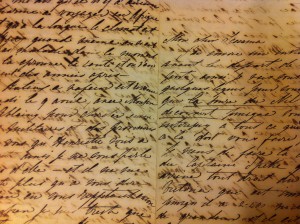
And then with just enough time to spare, on the way home I pass the beautiful Mauritius Museum. Again, very small, human scale. And in an upstairs room on the left, with two other Vermeers to keep her company, she looks out from her frame at me. “The Girl with a Pearl Earring.”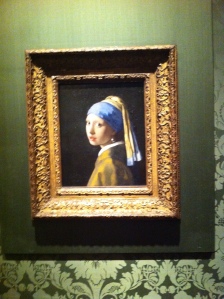
And she is just lovely…

I am loving your travels and research, particularly as I am now a definite ACT -i.e arm chair traveller.!
Love Florence x
LikeLike
Glad you are finding the dejavu of walking in the footsteps of those kindred souls unsurprising and familiar. Hope more insight into their being comes when working with their personal things as so often happens.
Cheers
Anna
LikeLike
It sounds wonderful. I hope you find some amazing things.
Dee
LikeLike
It is so easy to imagine wandering around the streets of the Hague from your descriptions Annie, stopping for coffee and poffertjies yum! What an amazing collection of correspondence, and the security measures – wow! Same as a prison! Happy researching:)
LikeLike